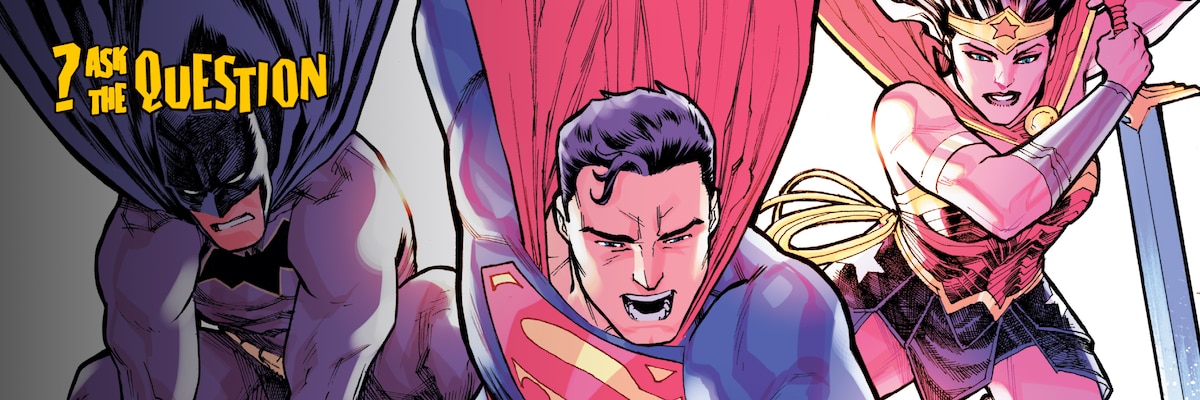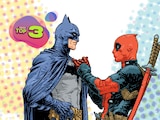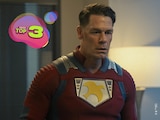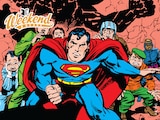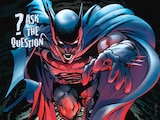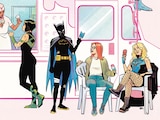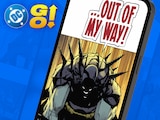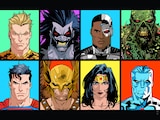Welcome back once more to ASK…THE QUESTION, our monthly feature where we answer all the questions about the DC Universe you’ve ever thought to ask. I am your host and chief investigator Alex Jaffe, better known to the DC Official Discord community as HubCityQuestion. Every day on that server, readers like you come to me with the DC mysteries that vex them in an attempt to learn more about our world of heroes. This column features some of the most interesting and enlightening questions I get each month on the Discord server, refined and refitted for the general public. So stick around, and maybe you’ll learn something new about something you thought you already knew.

Drapion asks:
When did Superman and Batman meet Wonder Woman for the first time in the comics?
In terms of publication time, Batman and Superman only met Wonder Woman once in the Golden Age, in 1947’s All-Star Comics #36. There, the World’s Finest filled in for Johnny Thunder and the Atom in the JSA roll call. The next time they’d be featured together would be the first Justice League of America story in The Brave and the Bold #28, thirteen years later.
In-universe, of course, the answer depends on which era of continuity we’re talking about. In the Golden Age, All-Star Comics #36 is our only documented account of their meeting. The Silver Age “Earth One” has a story of the entire League, outside of pre-existing relationships between Batman and Superman, and Green Lantern and the Flash, meeting for the first time in Justice League of America #9, battling the Appelaxian invaders. Post-Crisis, Matt Wagner’s Batman/Superman/Wonder Woman: Trinity miniseries featured a new account of the trio’s first meeting. In the New 52, they would meet for the first time in Justice League: Origin as comrades in arms against Darkseid. The most recent account of their first meeting is in 2017’s Wonder Woman Annual #1, where an established Superman and Batman scope out a recently debuted Diana together for the first time.
Jademoonstroller asks:
When was the first time Batman and Wonder Woman teamed up? Just the two of them.
Good follow-up. The best vehicle for early Batman team-ups was usually the Brave and the Bold title, and that’s where Wonder Woman really got to hang out with Batman outside of the Justice League for the first time. 1968’s The Brave and the Bold #78 is a three-hander featuring Batman, Batgirl and Wonder Woman, where both found themselves falling in love with Batman during a ploy to defeat the newly debuting villain Copperhead. Diana wouldn’t get some true alone time with Bruce until the following year’s Brave and the Bold #87, during the “I Ching” period when she was deprived of her powers and reinvented as an international woman of mystery.
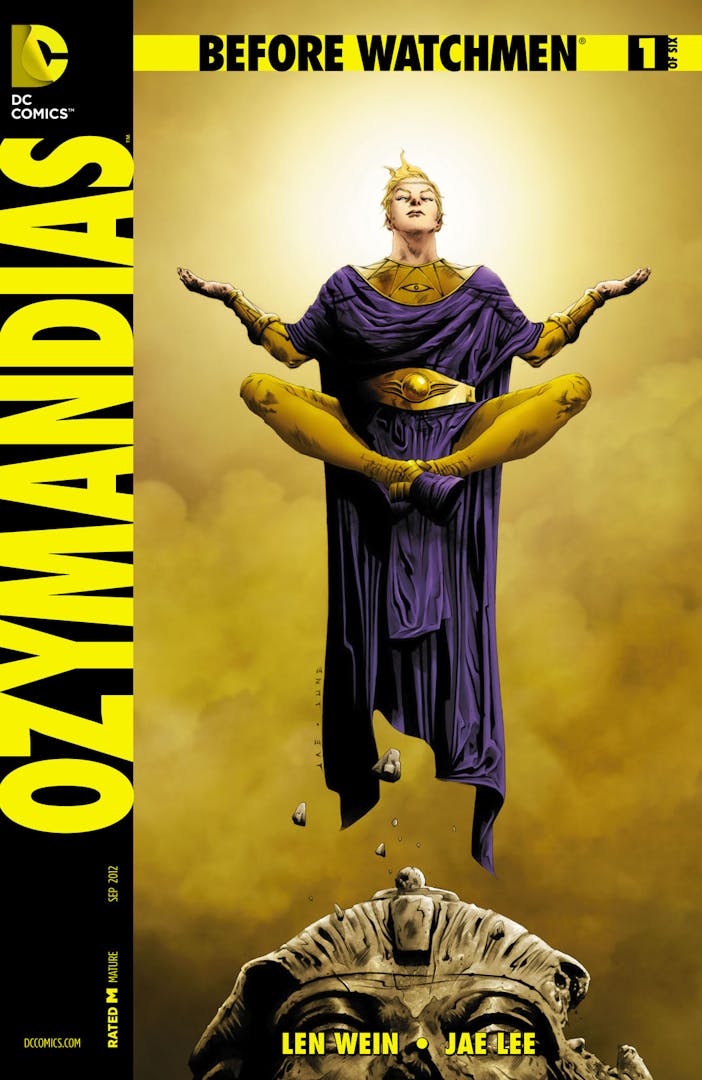
Lithose asks:
If Rorschach was supposed to be the Question and Mr. A, Nite Owl is the Phantom, Blue Beetle and Batman, and Silk Spectre is supposed to be Nightshade and Phantom Lady, who's Ozymandias supposed to be?
Ozymandias was based on many of the early pulp heroes, like Doc Savage, who emphasized a superhuman control of mind and body, but especially Peter Cannon, Thunderbolt—a character who was at the time, due to an arrangement with creator Pete Morisi, a temporary acquisition from Charlton Comics (unlike the more permanent arrangements for the likes of Blue Beetle, Nightshade and the Question). DC had the rights to publish Thunderbolt stories for a few years and indeed published a twelve-issue Peter Cannon: Thunderbolt series in 1992, but those rights soon after reverted to the creator’s estate.
Garth Curry asks:
What was the Outlaws' settled base, if they ever had one? Did they have an HQ, or were they living out of one of Jason's safehouses or something?
During the New 52 run of Red Hood and the Outlaws, they were explicitly mobile. The first half of the Rebirth run had them based out of Gotham; first in Ma Gunn’s school for young criminals and then in a floating headquarters designed by a super-intelligent Bizarro. After that, the band broke up and Jason went mobile again—though he eventually came home to roost at a commandeered Iceberg Lounge, and some time after that, ran his own supervillain school funded by Lex Luthor in Year of the Villain. In contrast, much of the Red Hood and the Outlaws WEBTOON series takes place on the Justice League Watchtower.
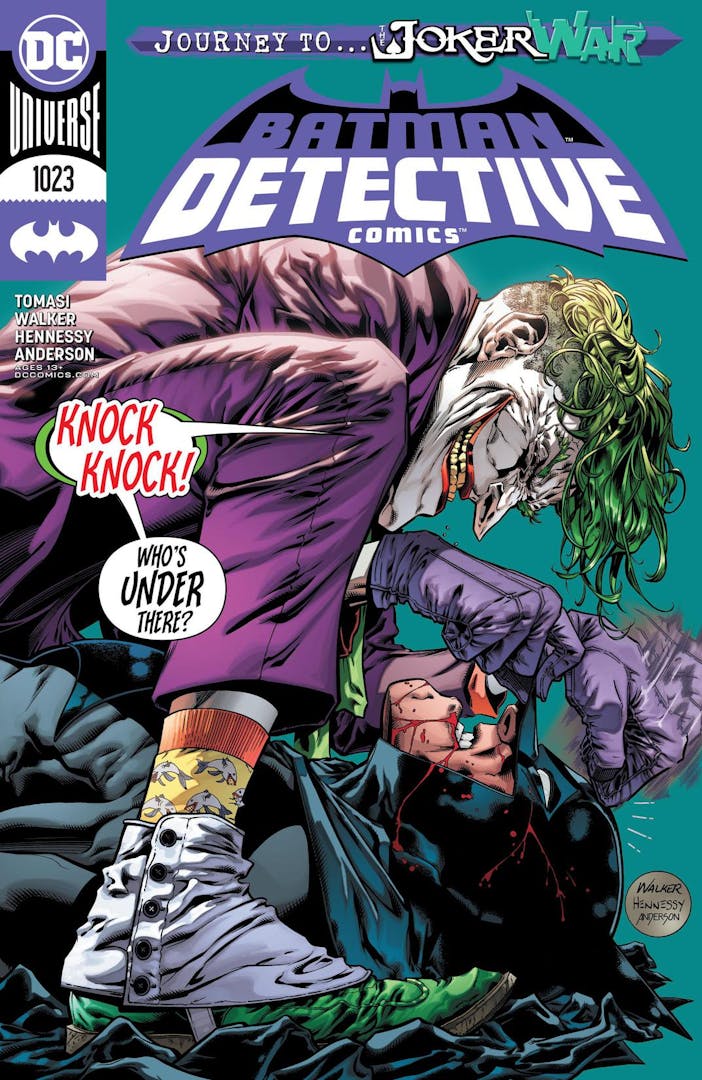
GAZBAZ asks:
Does Joker know that Batman is Bruce Wayne?
He did, at least at one point. In the 2015 storyline Batman: Endgame, the Joker drops his cards on the table and reveals he’s known who his nemesis really was this whole time. At the end of the story, though, both Batman and the Joker lose their memory after taking a bath in a Dionesium pit underneath Gotham City. While Batman would later have his memories returned to him, and Joker’s former personality broke back through, it remains ambiguous whether the knowledge of Batman’s identity returned to him as well.
TheDitzyJester:
Are Harley and Ivy in an open relationship again?
As seen in the ongoing Harley Quinn, Poison Ivy and the recent Gotham City Sirens: Unfit for Orbit, Harley and Ivy are currently in a committed relationship, but aren’t averse to occasionally taking on additional partners. Harley and Ivy are well aware of their girlfriends’ respective current entanglements with Janet-From-HR and iron-fisted real estate magnate Althea Klang, and it’s caused no strain on their relationship.
Sebastian O. asks:
What’s the in-universe explanation for why Gotham and Metropolis, two cities that are sometimes portrayed as being right next to each other, are so radically different in tone, crime rate and overall vibe?
What’s the reason New York City and Jersey City have different vibes? Cities just have different characters to them. It’s not that strange.
But I suppose if you’re really looking for an answer, there have been some suppositions in certain stories, like Peter Milligan’s Dark Knight, Dark City, Grant Morrison’s Batman: Gothic and Ram V’s Gotham Nocturne saga, that the city of Gotham has been inherently cursed from the moment it was founded. You could also place the blame, if you wish, on clandestine organizations such as the Court of Owls, who have endeavored to direct the city in their image, or even the corrupt system of Arkham Asylum which subjects the entire city to madness, as detailed in Morrison’s Batman: Arkham Asylum.
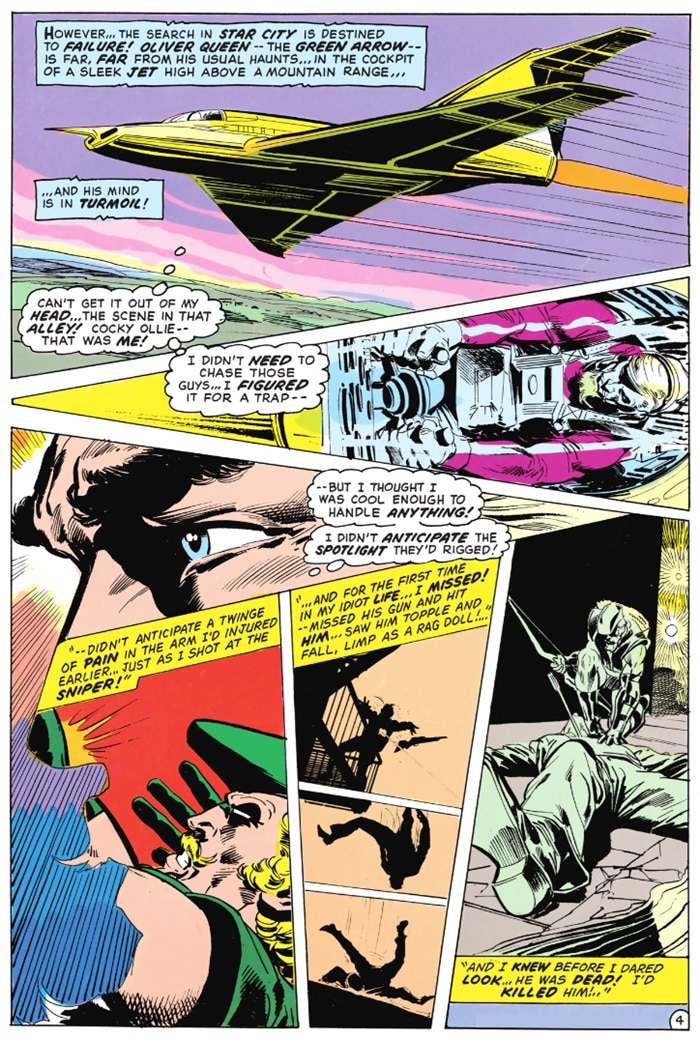
Seraph asks:
Who is the man Green Arrow references having killed in issue #18 of The Question? I assume this was an important backstory moment for Ollie.
This is a reference back to a classic, pivotal story in Dennis O’Neil’s Lantern/Green Arrow saga, “Green Arrow is Dead!” The source of one of his greatest regrets to this day, Ollie accidentally killed a sniper named Ricky after an injury to his arm threw off his aim to make what should have been a disarming shot a fatal one. Ollie was so devastated by his manslaughter that he gave up being Green Arrow, abandoned his life and moved to an ashram to develop his spirituality. Unbeknownst to Ollie, it would be in that Ashram that he would meet his son, Connor Hawke, for the first time.
The story was first printed as a backup feature to 1972’s The Flash #218, but has since been featured in various Green Lantern/Green Arrow collections.
Dragon Moth asks:
Who was the first Jewish superhero?
Though there have been some early implications of Judaism in superheroes (Jerry Siegel’s “Funnyman” perhaps being the earliest), the first explicitly Jewish superhero was DC’s own Seraph, who appeared as a representative of Israel in the Global Guardians for 1977’s Super Friends #7.
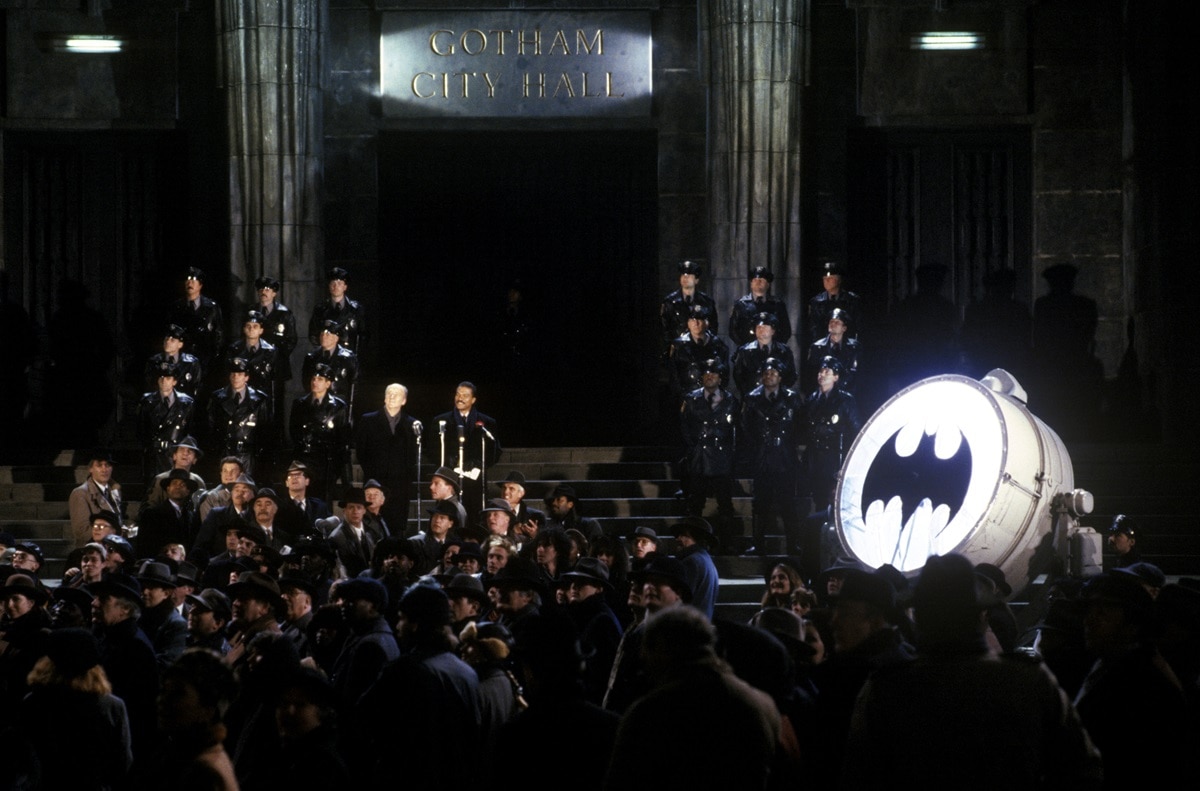
Lincolnfan78 asks:
Has there ever been an origin story of how the Bat-Signal first started? I'm guessing Gordon was trying to find a way to contact Batman.
As it first appeared in Detective Comics #60 back in 1942, Batman and Robin were as surprised as anyone to see the Bat-Signal in the sky—suggesting that it was the Gotham Police’s idea as a device to get in touch with Batman. Later origin stories tend to corroborate this, though starting with the 1989 Tim Burton Batman movie, the Bat-Signal sometimes became depicted as a gift from Batman to the police as a means to contact him.
Msf asks:
Are there Lanterns from Earth other than the green ones and the Red Lantern cat?
Well, there’s Star Sapphire, for one. Black Hand was forced into the Indigo Tribe for a while. I’d say the most overlooked Earth Lantern would be Jack Moore, a young Englishman and protagonist of the first half of the New 52 Red Lanterns series. After earning his ring, Moore took on the name Rankorr. Rankorr’s probably dead, as seen in the New 52 Lobo series, but no one can really say for sure.
Mithrophon asks:
When did DC first start publishing annuals?
DC's first annuals technically ran from 1960-1964, but those were always oversized reprint collections of previously published stories. DC's first annual with an original story was the Legion of Super-Heroes Annual #1 in 1982.
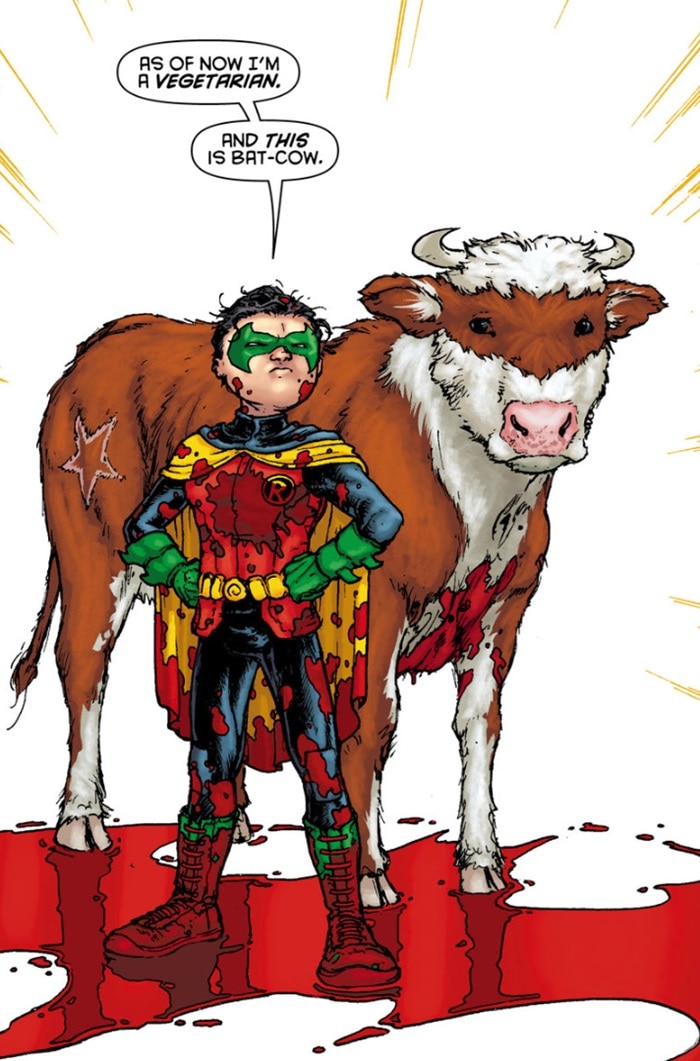
Brainweasel asks:
When did Damian go from killing animals to an unabashed animal lover? Was it some sort of retcon for the character?
I can actually point you to the exact moment this happened. The turning point was the discovery and adoption of Bat-Cow, in 2012’s Batman Incorporated #1. Damian was so immediately taken with the cow that, like his father resolutely declaring that he would become a bat when one first crashed through his window, Damian vowed on the spot to become a vegetarian.
Green Loontern asks:
Has Krypto ever been Supergirl's dog before? I thought he was always Superman's and Supergirl had Streaky.
Krypto has always primarily been Superman’s dog (except in the 2005 Krypto the Superdog TV show, where he was cared for by a kid named Kevin Whitney), but there was a time when Superman left Krypto in Supergirl’s care for an extended period—specifically, between 2018 and 2022, when Superman offered Krypto as a companion to Kara as she left Earth to explore deep space for answers about Krypton’s fate and her own place within it. This period happens to intersect with Tom King and Bilquis Evely’s Supergirl: Woman of Tomorrow, the basis for next year’s upcoming Supergirl film. As a lead-in to that film, this should explain why in the new cinematic DC continuity, Krypto’s ownership is attributed to Kara rather than her cousin.

Mangoblade asks:
Why did Batman slap Robin?
This is a pretty popular question I get, based on the famously exploited memetic image of Batman giving Robin a beating. You may be relieved to know that this story never took place in continuity, instead being part of an “Imaginary Story” in 1965’s World’s Finest #153. The story supposes an alternate reality where instead of friends and allies, Batman and Superman were bitter enemies. In the story, Batman slaps Robin after he comes to Superman’s defense against Batman’s ire. This universe’s Robin reacts to the slap by cutting ties with Batman entirely, leaving Wayne Manor forever.
That’s all the time we’ve got this month. In fact, it’s a lot more than the time we’ve got this month. My editor is probably going to cut a lot of these out. [Editor’s note: I did. –Trim-Happy Tim] If you want more, you can always find me on http://discord.gg/dcofficial, where you can look for #ask-the-question. That’s where, quite appropriately, you can, yourself, ASK…THE QUESTION.
Alex Jaffe is the author of our monthly "Ask the Question" column and writes about TV, movies, comics and superhero history for DC.com. Follow him on Bluesky at @AlexJaffe and find him in the DC Official Discord server as HubCityQuestion.
NOTE: The views and opinions expressed in this feature are solely those of Alex Jaffe and do not necessarily reflect those of DC or Warner Bros. Discovery, nor should they be read as confirmation or denial of future DC plans.
